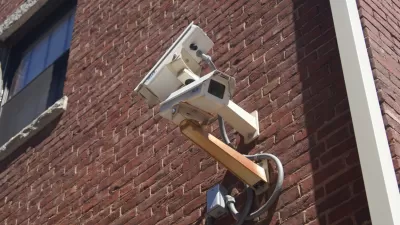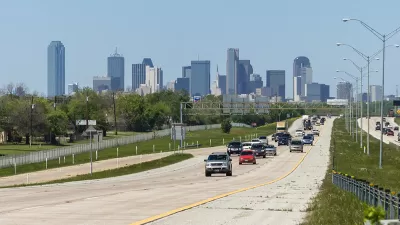Despite its insistence that the technology would only target criminals, Dallas Area Rapid Transit (DART) should reconsider using facial recognition software to address crime. The potential for abuse may be too high.

Prompted by concerns about crime, Dallas' DART system is experimenting with facial recognition software linked to an offender database. Although officials likely have good intentions, Michael A. Lindenberger is worried about the creep factor: will riders be logged and tracked every time they use the system?
The question is whether DART will restrict its use of the technology to criminal situations alone. "DART says it will build its own database of names and photos, based on incidents in which DART riders come to the attention to DART police. Maybe you get busted for not paying your fare. The police take your picture, and in you go to the database. You get in a fight on the train, and in you go."
While Lindenberger's concerns may be unfounded right now, facial recognition could become yet another way to assault citizens' privacy and anonymity. "Computers at DART could be building a database full of information about each of its riders, forevermore. And someday, if DART wants to find me at 8:30 on a Monday morning, it won't even have to ask its cameras to help. It will have years' worth of my travel habits, and will simply make a guess. It'll be a pretty good one."
FULL STORY: DART should scrap its creepy plan to use facial recognition software

Study: Maui’s Plan to Convert Vacation Rentals to Long-Term Housing Could Cause Nearly $1 Billion Economic Loss
The plan would reduce visitor accommodation by 25,% resulting in 1,900 jobs lost.

North Texas Transit Leaders Tout Benefits of TOD for Growing Region
At a summit focused on transit-oriented development, policymakers discussed how North Texas’ expanded light rail system can serve as a tool for economic growth.

Using Old Oil and Gas Wells for Green Energy Storage
Penn State researchers have found that repurposing abandoned oil and gas wells for geothermal-assisted compressed-air energy storage can boost efficiency, reduce environmental risks, and support clean energy and job transitions.

Private Donations Propel Early Restoration of Palisades Playground
Los Angeles has secured over $1.3 million in private funding to restore the Pacific Palisades playground months ahead of schedule, creating a modern, accessible space that supports community healing after recent wildfires.

From Blight to Benefit: Early Results From California’s Equitable Cleanup Program
The Equitable Community Revitalization Grant (ECRG) program is reshaping brownfield redevelopment by prioritizing projects in low-income and environmental justice communities, emphasizing equity, transparency, and community benefits.

Planting Relief: Tackling Las Vegas Heat One Tree at a Time
Nevada Plants, a Las Vegas-based nonprofit, is combating the city’s extreme urban heat by giving away trees to residents in underserved neighborhoods, promoting shade, sustainability, and community health.
Urban Design for Planners 1: Software Tools
This six-course series explores essential urban design concepts using open source software and equips planners with the tools they need to participate fully in the urban design process.
Planning for Universal Design
Learn the tools for implementing Universal Design in planning regulations.
Ascent Environmental
Borough of Carlisle
Institute for Housing and Urban Development Studies (IHS)
City of Grandview
Harvard GSD Executive Education
Toledo-Lucas County Plan Commissions
Salt Lake City
NYU Wagner Graduate School of Public Service




























